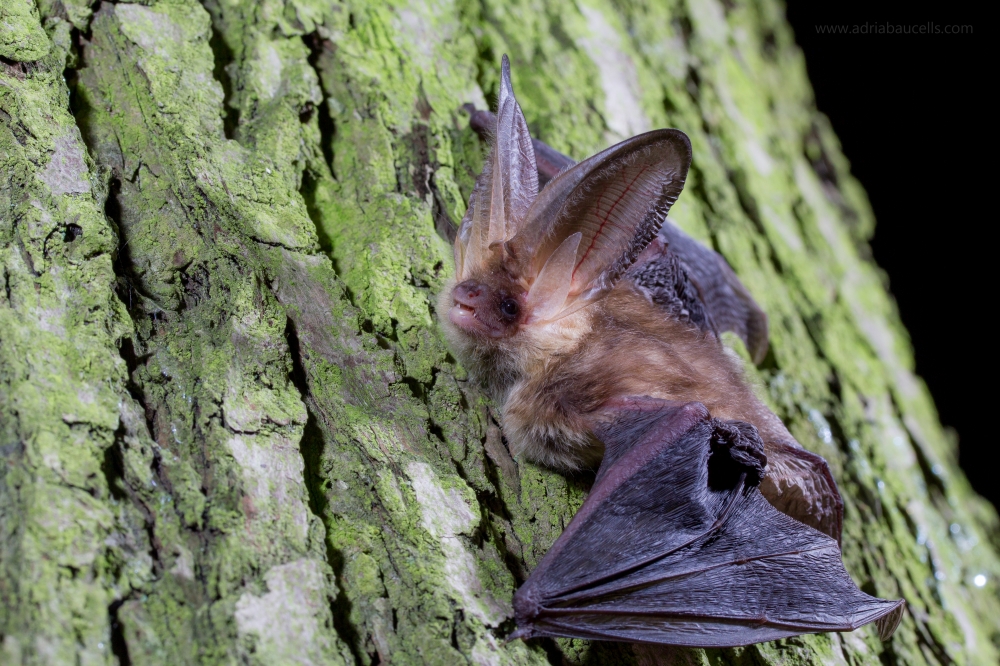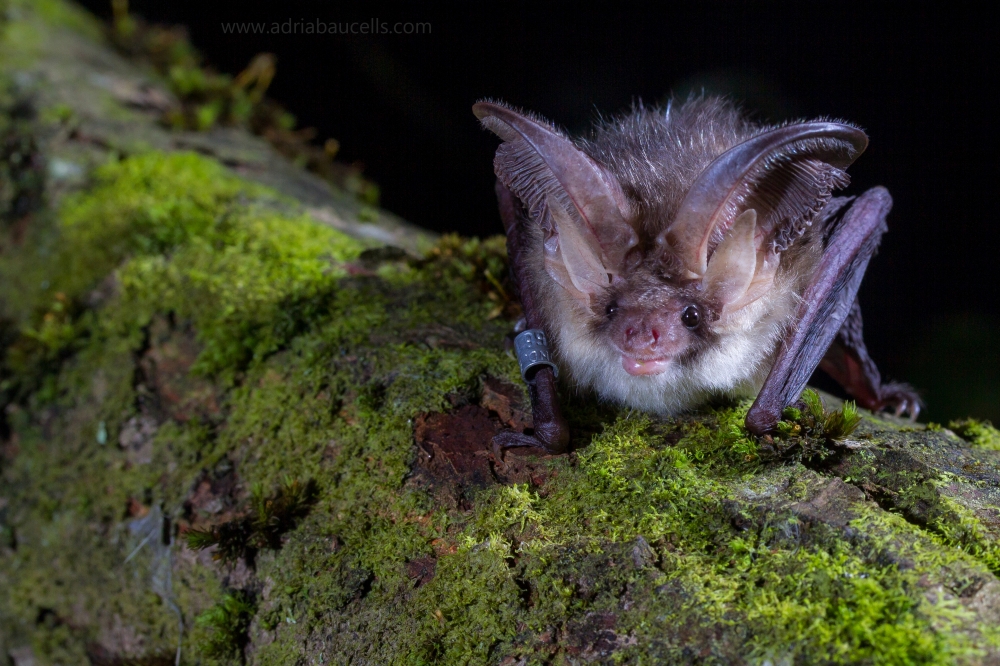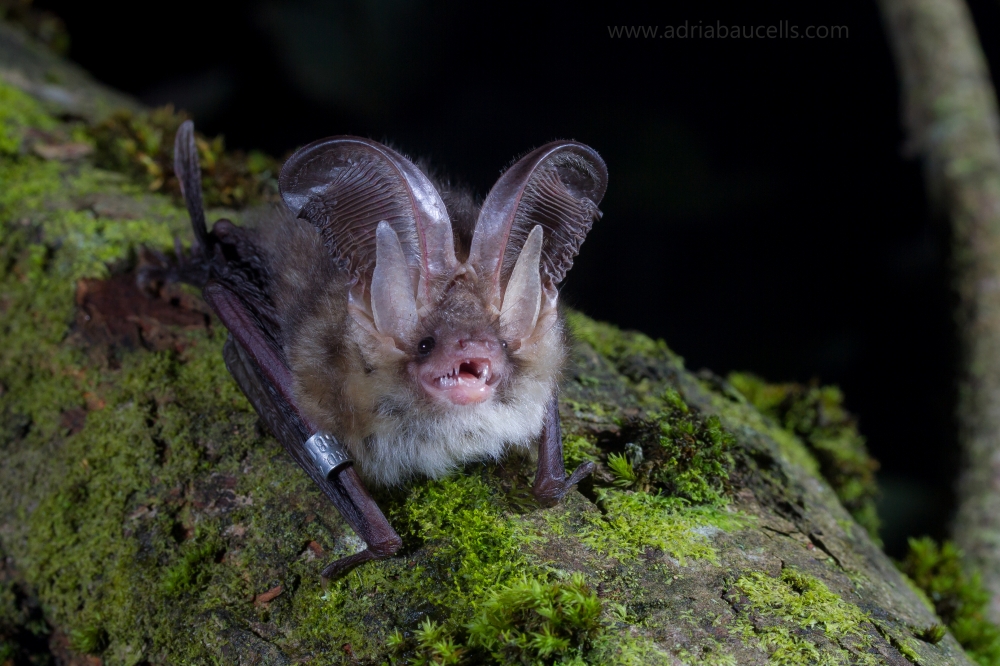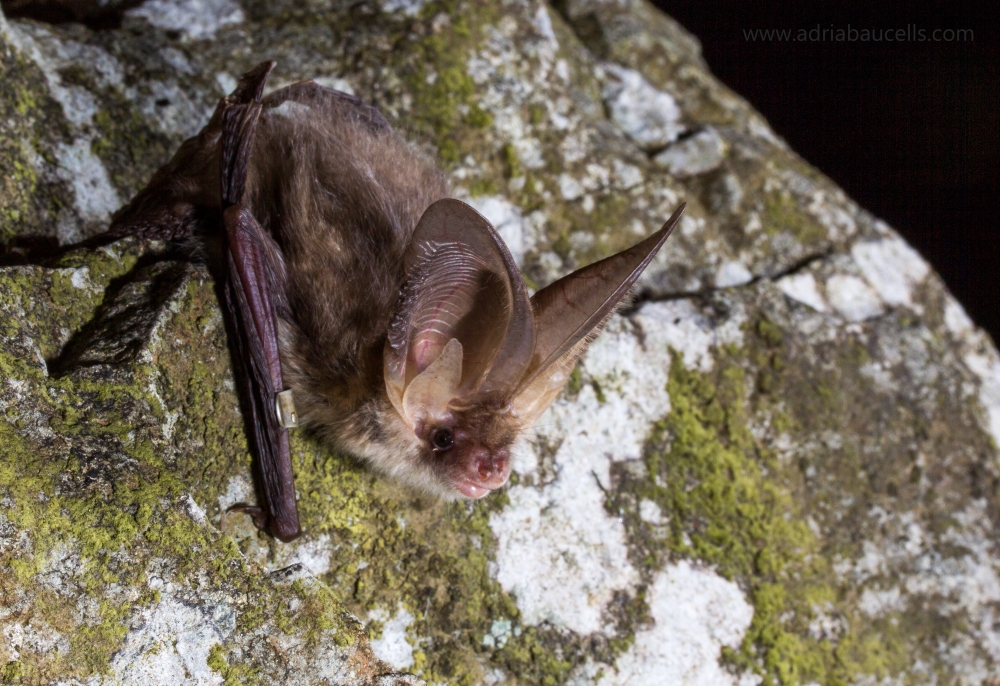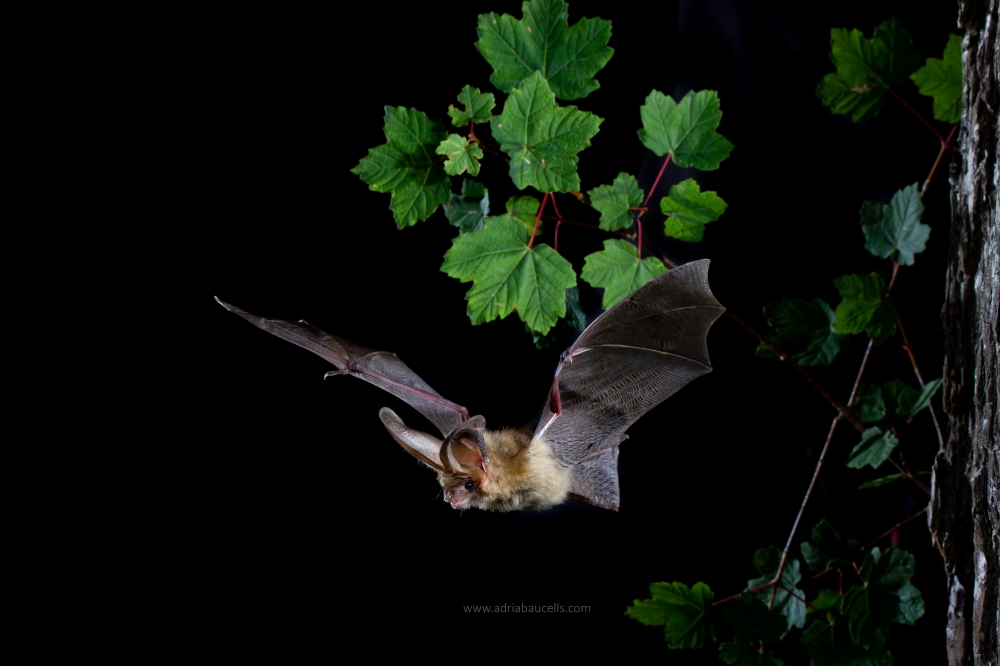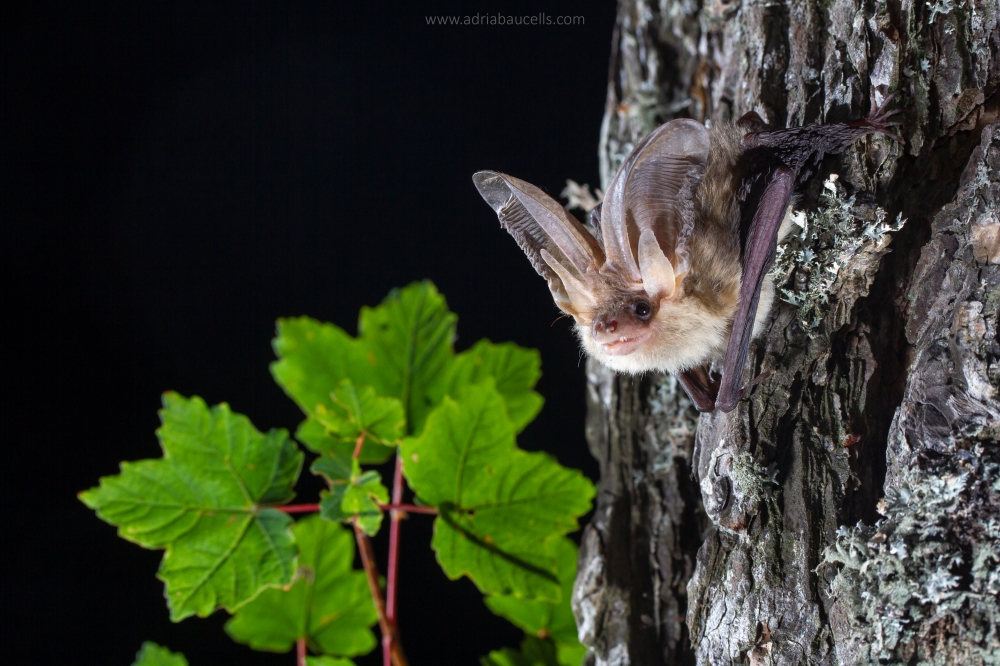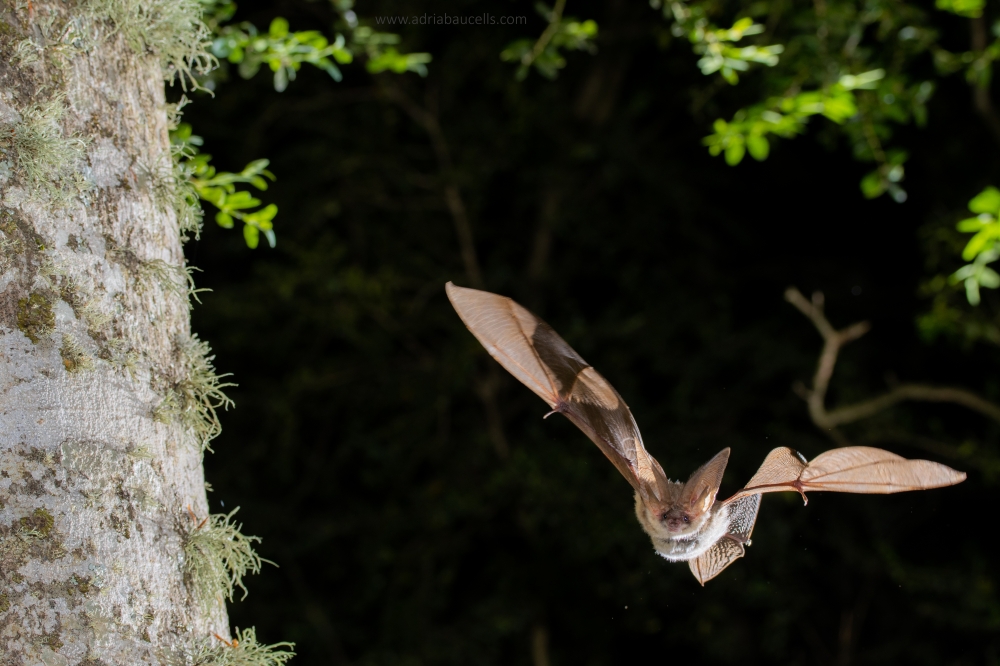Brown long-eared bat
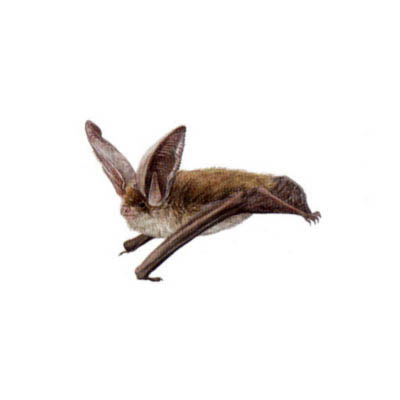
Plecotus auritus (Linnaeus, 1758)
Vespertilionidae
Least Concern
| Other names | |
|---|---|
| Catalan | Orellut daurat |
| Spanish | Orejudo dorado |
| English | Brown long-eared bat |
| French | Oreillard roux |
| Basque | Belarrihandi arre |
| Galician | Orelludo dourado |
Description
Medium-sized bat with a body length of 39 to 46 mm, a forearm length between 35 and 43 mm, a tail between 39 and 49 mm, and a weight between 6 and 9 g. The face is robust and light coloured, with two glands behind the nostrils. The ears are the largest in its genus, measuring between 29 and 35 mm, and, along with the tragus, they have little pigmentation. It has distinctive long and silky fur with a yellowish or cream-colored ventral part and a brown or mahogany dorsal part. The chin has a characteristic boomerang shape that can be used to differentiate this species from its congeners.
It differs from other long-eared bats by the extremely long thumb (>6.5 mm) with equally long claws (>2 mm), a narrower tragus (between 4.4 and 5.5 mm) than the gray long-eared bat (Plecotus austriacus), and a more rounded chin protuberance compared to the alpine long-eared bat (Plecotus macrobullaris), which is darker and triangular.
Fotografies
Distribution
A typically European species, especially from the central and northern regions, reaching up to 63-65°N. In southern Europe, it is only found in forested and mountainous areas, being much less abundant and sometimes absent in the Mediterranean area. To the east, it extends to the Urals and the Caucasus. In the Iberian Peninsula, it is only present in the northern half, where it could correspond to a different species (see description).
Roosts and phenology
There are two main types of shelters: trees and buildings. In western Europe, it almost exclusively occupies buildings, while in the south, east, and Russia, it primarily uses tree cavities. Tree shelters include various structures, from under bark and crevices in decomposing trees to woodpecker cavities, as well as bat boxes and bird nesting boxes. In buildings, it can occupy spaces between tiles or behind walls. Maternity colonies typically consist of 5 to 50 females, with up to 80 in the northern part of its distribution. Colonies in buildings tend to be quite stable throughout the summer, while those in trees often change frequently. Males are solitary in the summer. Parturition (usually a single pup) begins in June in the south, while in the north, it starts in early July. Juveniles can fly at six weeks of age.
Some individuals reach sexual maturity in early fall, although most do not reach sexual maturity until the following year. They exhibit swarming behavior during mating, congregating in caves from early August to October, with peak activity in September. A second swarming occurs between February and April in some regions. It is essentially a sedentary species, with movements typically ranging from 10 to 30 km, with a recorded maximum of 90 km for a female in Germany. During winter, they use subterranean shelters with temperatures between 3 and 7°C, such as mines, caves, cellars, and basements, where they hang alone or in small groups.
Habitat and diet
A forest species, it typically hunts in boreal mixed forests, coniferous forests, beech forests, and oak forests. In some areas, it may also feed in more open areas such as orchards, parks, and gardens. However, it is a species that tends to select mature and structured forests with an abundance of old and dead trees. In northern Europe, it is found in lowland areas, in the central region between 200 and 2,000 meters in altitude, and in the Mediterranean in mountain forests above 1,000 meters.
It primarily feeds on invertebrates, although it also consumes dipterans, springtails, and hemipterans, as well as a variety of non-flying arthropods such as spiders, harvestmen, woodlice, and caterpillars. It employs two distinct hunting strategies: capturing flying insects in mid-air and directly hunting terrestrial invertebrates from the substrate. It searches for prey directly through sound or sight, with a slow and maneuverable flight close to vegetation. Most prey are captured by pouncing on them, and larger prey are transported to a perch to be consumed while hanging.
Echolocation
Echolocation is very similar to species of the same genus with frequency-modulated (FM) calls and two distinct harmonics, the first with frequencies between 25 and 30 kHz and the second between 50 and 60 kHz. The two harmonics usually do not overlap, and the calls are very low in intensity and difficult to record. The calls are emitted through the mouth and nose simultaneously. It is included in the phonic group Plecotus sp., along with other long-eared bats.
Status
According to the IUCN Red List, it is considered Least Concern, with a stable population trend. This species is protected by national legislation, the Eurobats agreement, the Bern Convention, and the European Habitat and Species Directive. In most of its distribution, it is considered common without significant threats, although in some peripheral areas, it is less abundant, such as in the Iberian Peninsula. Its main threat is the destruction of forest habitats, as well as collisions with vehicles due to its low and slow flight.

